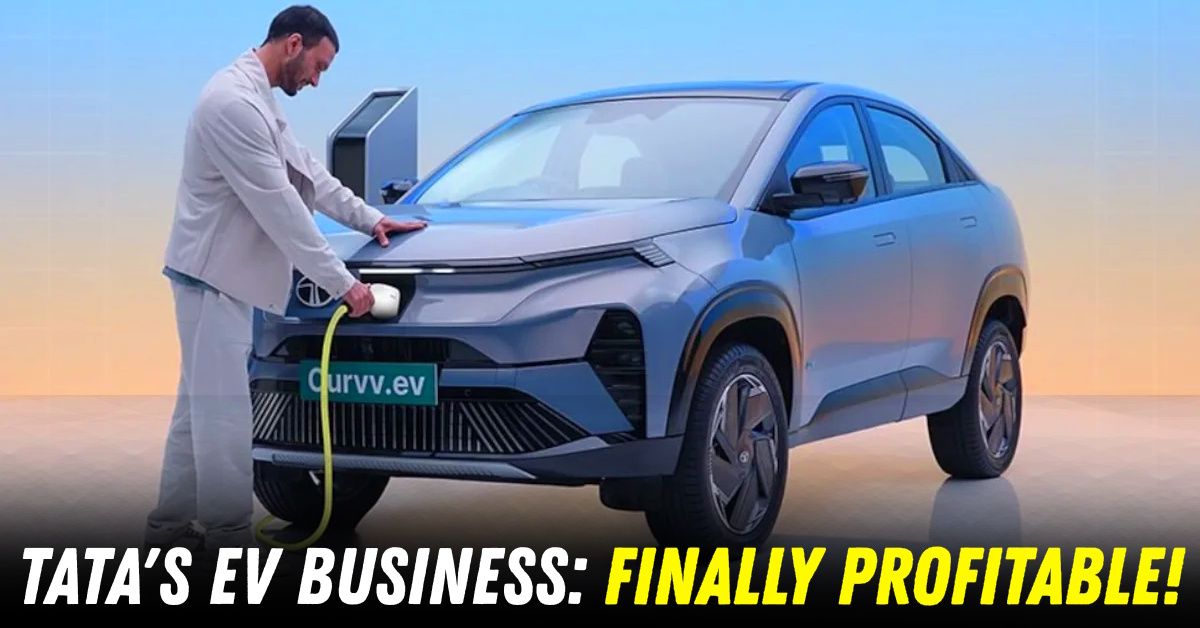Tata Motors' Electric Car Business Has Become Profitable Despite Marketshare Dipping: We Explain


Tata Motors has achieved something remarkable in the electric vehicle space: its EV division turned profitable for the first time in five years, even as competitors like MG Motor and Mahindra have steadily chipped away at its market dominance.
This seemingly contradictory outcome reveals a strategic shift from chasing volumes to prioritising margins, marking a crucial inflection point for the country's largest electric car manufacturer.
The Mumbai-based automaker's electric vehicle arm posted a profit before tax of ₹100 crore in FY25, a dramatic reversal from the ₹400 crore loss recorded in the previous year. More significantly, the division achieved a positive EBITDA margin of 6.5% in the fourth quarter, making it one of the few EV manufacturers globally to reach profitability before depreciation and amortisation.
This milestone became even more impressive when considering that the company achieved this without relying on government incentives. During the December quarter, Tata's EV business generated an operating profit independent of the ₹182 crore received under the production-linked incentive scheme. Structural margin improvements came through better product mix, particularly with the introduction of the Curvv.ev mid-size SUV, and deeper localisation benefits including battery pack manufacturing.
The profitability achievement comes against a backdrop of significant market share erosion. Tata's dominance in the electric passenger vehicle segment has weakened considerably, with its share falling from over 70% in FY24 to approximately 53% in FY25. The decline accelerated in recent months, with April 2025 seeing the company's market share drop to just 36%.
MG Motor has emerged as the primary beneficiary of Tata's declining fortunes. The company's market share surged to 28% in April 2025, largely driven by the success of the MG Windsor EV, which has sold over 20,000 units since its September 2024 launch. Meanwhile, Mahindra has also gained ground with its new "born electric" models - the BE 6 and XEV 9e - capturing 24% market share in April.
The apparent contradiction between rising profits and falling market share reflects a deliberate strategic pivot. Tata's EV sales volumes decreased by approximately 10.7% year-on-year in FY25, with around 57,616 units sold compared to 64,530 units in the previous year. However, the company compensated for lower volumes through improved operational efficiency and a focus on higher-margin vehicles.
This approach represents a maturing of Tata's EV strategy. Rather than pursuing market share at any cost, the company has optimised production costs, streamlined supply chain management, and shifted towards premium variants that generate better margins per unit sold. The success of models like the Curvv.ev demonstrates how strategic product positioning can drive profitability even in a competitive environment.
The intensifying competition has fundamentally altered the electric vehicle landscape. MG Motor's aggressive pricing strategy and fleet partnerships have proven particularly effective, while Mahindra's brand strength in the SUV segment has attracted urban and semi-urban buyers. New entrants including BYD and Hyundai, along with Maruti Suzuki's upcoming EV launches, promise to further fragment the market.
Tata Motors acknowledges this evolving reality and has outlined plans to reclaim a 50% market share over the next 18–24 months. The strategy involves expanding into the premium segment above ₹20 lakh with upcoming models like the Harrier.ev and Sierra.ev, while strengthening its position in existing price categories through improved value propositions.
This profitability milestone signals Tata Motors' evolution from a volume-focused pioneer to a margin-conscious competitor. The company's ability to generate profits while facing increased competition demonstrates the viability of its operational improvements and product strategy. However, sustaining this performance while regaining market share will require continued innovation and competitive positioning in an increasingly crowded marketplace.
The success also validates the broader potential for profitable EV manufacturing, particularly for companies that can achieve sufficient scale and operational efficiency. As the market continues expanding, Tata's experience suggests that sustainable profitability may ultimately matter more than temporary market share dominance.